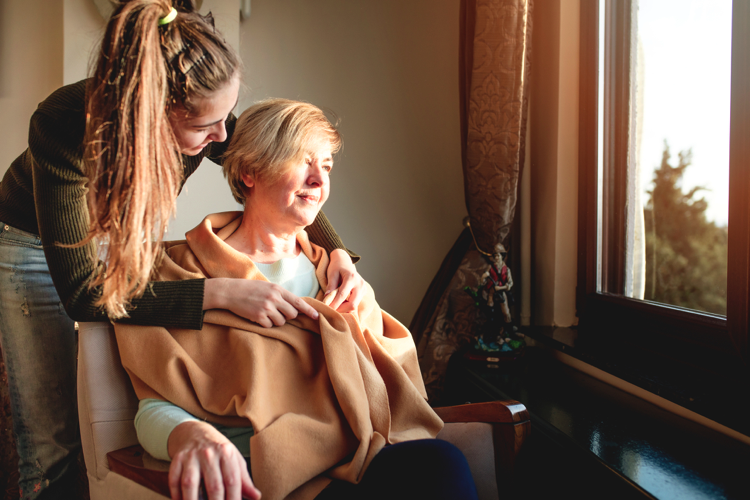 While home care options for a terminally ill patient may not seem like a novelty today, this type of care was unusual as recently as the mid-1950s. Dame Cicely Saunders, a British registered nurse, pioneered the notion of caring for terminally ill patients, addressing their pain and symptoms, as well as attending to their emotional and spiritual needs. A key component of hospice care is providing support to the family, friends, and caregivers of the terminally ill patient, including education and bereavement care through the end-of-life process.
While home care options for a terminally ill patient may not seem like a novelty today, this type of care was unusual as recently as the mid-1950s. Dame Cicely Saunders, a British registered nurse, pioneered the notion of caring for terminally ill patients, addressing their pain and symptoms, as well as attending to their emotional and spiritual needs. A key component of hospice care is providing support to the family, friends, and caregivers of the terminally ill patient, including education and bereavement care through the end-of-life process.
The first modern hospice in the United States was founded in 1974. Today, hospice care occurs in private homes, hospitals, nursing homes, and in hospice care facilities. Designated as a Medicare benefit in 1986, hospice care can be accessed when individuals have less than six months to live and have decided to no longer seek curative treatment for a terminal illness.
Hospice care is typically delivered to patients in their final days of a terminal illness, with statistics showing 30% of patients receiving 1.7 days of service, according to Theresa Schmidt, MA, PMP, CSPO, a director at Discern Health, a company that works to define and measure value in healthcare and utilizes data to improve patient care. Schmidt, who had a previous role with the National Partnership for Hospice Innovation, encourages families to access this benefit earlier in order to maintain the highest quality of life in the final stages of a terminal illness.
Often used interchangeably, there are distinct differences between hospice care and palliative care, explains Schmidt. Palliative care is specialized medical care for individuals living with serious illness and can be accessed at any stage of the illness. Palliative care patients can continue to pursue aggressive, curative treatment, and while it may be covered by Medicare, Medicaid, or private insurance, palliative care is not a Medicare benefit like hospice.
Hospice care includes many palliative treatment options; however, it is typically accessed when a patient discontinues curative treatment for a terminal illness and has fewer than six months to live. Schmidt points out that while hospice patients do not receive treatment for their terminal illness, they can receive medications for long-term health conditions such as diabetes.
Hospice’s holistic approach seeks to care for all parts of a patient and his or her family. This may include doctors, nurses, social workers, home health aides, chaplains, and physical and occupational therapists. Additionally, hospice care nurses are on call 24 hours a day, seven days a week, and can provide respite services and continuous long-term care in crisis situations.
While hospice is typically thought of as a service for older adults, throughout the United States there are also hospice programs specializing in the end-of-life care for infants, children, and teenagers. Like hospice care for adults, programs aimed at younger people work with the whole family, providing support, education and bereavement counseling for parents, siblings, grandparents, friends and other immediate family. Schmidt points out that when there are crisis situations in a community, it is often hospice that is on the front lines, providing grief and loss support.
For information about hospice in your area, Schmidt recommends accessing Hospice Compare, an online resource tool that provides details on quality of care. This site is just one resource, however, with data that does not capture all facets of hospice care. Patients and families are encouraged to talk with local hospices to find out whether services align with their values, goals, and needs.
To learn more about hospice care and the benefits to this approach to end-of-life care, listen to the full interview with Theresa Schmidt in the Help Choose Home podcast series by searching for “Help Choose Home” on iTunes, Google, or on any device at https://player.fm/series/help-choose-home.
The Help Choose Home podcast series is a joint effort between the National Association for Home Care and Hospice (NAHC), Axxess, and corecubed. The vision is to provide information and home care resources to help those with a care need learn more about healthcare at home. Podcasts are hosted by Merrily Orsini, president and CEO of corecubed, an industry leader providing cutting-edge home care marketing ideas and strategies that set agencies apart from the competition.
Join us in the quest to educate your community to Help Choose Home! Share this podcast with others on your social media and follow us on LinkedIn and Facebook.

